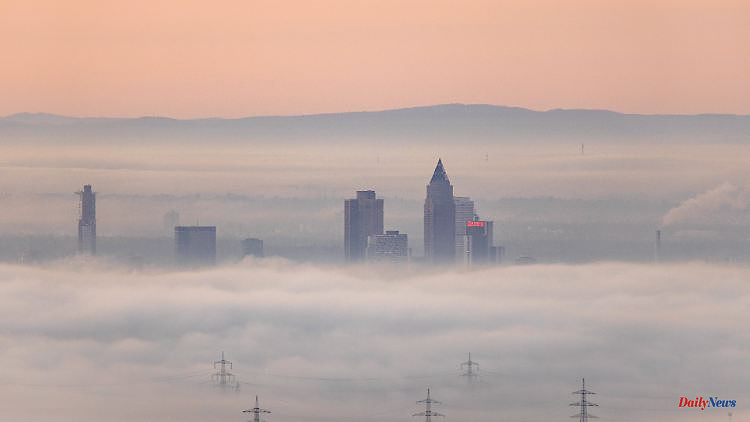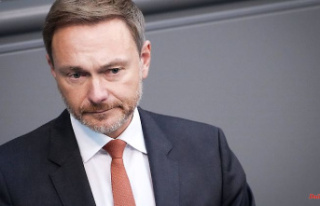Germans have to go without electricity for around ten minutes a year due to power outages. The Russian gas ban has increased public fears as to whether security of supply is still in place. In addition to a blackout, there could also be a brownout. But how likely are power outages in Germany this winter? An overview.
How often do power outages occur in Germany?
The Federal Network Agency was aware of exactly 162,224 power outages in 868 power grids nationwide in 2020, around 2,400 more than in 2019. Based on the individual customer, this meant no power for an average of 10.73 minutes, mind you, for the whole year. This was the lowest downtime since the authorities first surveyed it in 2006. The average for the years 2010 to 2020 is 14.05 minutes. When the figures were published, the Federal Network Agency spoke of a "constantly high level" of "supply reliability".
Is there a greater risk of power failure this year than usual?
The electricity market expert Christian Rehtanz does not assume that there is a greater risk of power failure. "The electricity system is secured at peak times by gas-fired power plants in order to cover the required output," says the professor for energy systems and energy management at the Technical University of Dortmund. The gas and electricity sectors are therefore linked. "Due to the immense importance of the electricity sector, everything will be done to keep it running." He assumes that even in the event of a gas shortage, gas will primarily be used to generate electricity and industrial customers will no longer be supplied with gas.
So there is no need to fear a blackout?
Electricity market expert Fabian Huneke from the consulting firm Energy Brainpool does not fear a blackout in Germany this winter, i.e. an uncontrolled collapse of the electricity supply. "At best, a so-called brownout is possible, in which the transmission system operators would have to take individual large consumers or regions off the grid by the hour," says Huneke. This can happen in the early evening when it is very cold, for example, when household electricity consumption increases sharply. Households in France play an important role: "Especially in France, a lot of heating is done with electricity." If there is not enough nuclear power there, the load undersupply could spill over into neighboring European markets and also cause problems in this country, because then a comparatively large amount of electricity would flow to France. This is made possible by the coupling of the European electricity grids, which not only enables cross-border electricity trading, but can also ensure greater grid stability in emergency situations.
What is going on with the French nuclear power plants at the moment?
According to Huneke, almost half of France's 56 nuclear power plants are currently off the grid. The reason for this is repair work and the occurrence of cracks in emergency cooling circuits. France's energy transition minister Agnès Pannier-Runacher said at the beginning of September that the electricity company EDF had committed to putting all nuclear power plants back into operation this winter. Huneke: "A large part of the French systems is quite old. That's why they are more susceptible to faults than the German ones, which are much younger."
Who actually cares that there is always enough electricity?
On the one hand there are the electricity producers who want to sell their electricity - from private households with solar roofs to large electricity producers such as RWE or LEAG. On the other hand, the network operators take care of the electricity transport to the consumers, above all four large companies that maintain the so-called transmission network. The companies 50Hertz, Amprion, TenneT and TransnetBW are responsible for the overhead lines through which the electricity flows at maximum voltage - 150,000 volts or more. Companies are legally obliged to operate a "safe, reliable and efficient energy supply network".
How do the four transmission system operators (TSOs) view the winter?
The Ministry of Economics wanted to know that in the summer. And for several reasons: because of the low water in many important waterways, because of the failure of many French nuclear power plants and the overall tense situation on the energy markets since the Russian attack on Ukraine. For the so-called stress test, the TSOs played through three scenarios with different difficult conditions. For example, it was about making assumptions about the level of the rivers that supply coal-fired power plants with fuel. Various assumptions were also made about the availability of French nuclear power plants, the use of fan heaters and the availability of gas in southern Germany. There were two core questions: Is there enough electricity available in Germany and in neighboring European countries, even under difficult conditions? And will the power grid remain stable under these conditions?
And what did they find out?
The network operators assess the supply situation in the coming winter half-year under the difficult conditions of all three scenarios as "extremely tense". In the two more critical scenarios, "load shortages" would also occur in Germany in a few hours. This means that the demand for electricity would then be higher than the supply - not everyone could be supplied with electricity. According to the study, in the most difficult scenario in Germany this could mean undercoverage for 3 to 12 hours throughout the winter.
The grid operators have also examined the security of transport in the power grid, the so-called grid security. Result: In none of the three scenarios is there enough power plant capacity available in Germany to avoid network bottlenecks. At least 5.8 gigawatts of secured balancing potential would be required abroad. This roughly corresponds to the output of four large nuclear power plants.
What do the TSOs recommend as countermeasures?
"Use of all possibilities to increase the power generation and transport capacities" is "strongly recommended". Among other things, they are in favor of securing the use of further power plant capacities, for example by returning coal-fired power plants from the reserve or by securing the gas supply of gas-fired power plants. In this context, they describe the availability of the three nuclear power plants that are still in operation as a further "building block for controlling critical situations". It also outlines what would happen if all the recommended measures were not sufficient: "Exports would then have to be restricted or large consumers controlled and temporarily switched off in order to maintain network security".
How did politicians react to the results of the stress test?
At the presentation of the stress test on September 5, the Ministry of Economics announced: "A crisis situation in the electricity system that lasts for hours in the winter of 22/23 is very unlikely, but cannot be completely ruled out at the moment." However, to ensure that there are no power outages, additional measures to strengthen network security are necessary. A number of measures that the stress test considers necessary are being implemented, such as the return of coal-fired power plants to the market, said Economics Minister Robert Habeck.
And what about the nuclear power plants?
The Economics Ministry wants two of the three remaining nuclear power plants to form a so-called "operational reserve" for emergencies. If necessary, the Isar 2 power plants in Bavaria and Neckarwestheim in Baden-Württemberg should make an additional contribution to the power grid in winter: either they should run largely through if bottlenecks become apparent early on, or again after the shutdown planned for the end of the year to be approached. New fuel rods should not be used for this. The two power plants should be available by mid-April. After that it should be over for them too. "Nuclear power is and will remain a high-risk technology," says Habeck, justifying the adherence to the nuclear phase-out.
The Emsland nuclear power plant in Lower Saxony will not be part of the reserve, but will be finally shut down as planned at the end of the year. Habeck argues that there are fewer alternative nuclear power plants in southern Germany than in the north. In an emergency, floating oil power plant ships are to be used to cover possible gaps in northern Germany.
Is it already clear what will happen next with the nuclear power plants?
No, the federal government has not yet made a final decision on Habeck's proposal. While Federal Chancellor Olaf Scholz supported the proposal, the FDP is in favor of the nuclear power plants continuing to operate. "It is essential to increase the capacities on the electricity market and thus reduce the galloping prices. The three safe nuclear power plants must continue to run," said Finance Minister Christian Lindner from the FDP of the "Neue Osnabrücker Zeitung". The opposition parties CDU and CSU also want all three nuclear power plants to continue operating.












